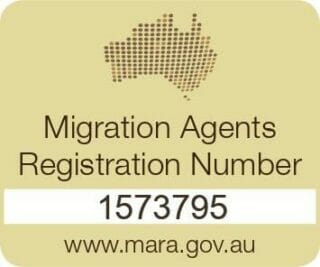This case study explores the Absorbed Person Visa and immigration issues that can affect early migrants to Australia (pre-2 April 1984) and the significant ramifications on their legal status with respect to their ability to remain in Australia and to travel freely into and out of Australia, and eligibility to become Australian Citizens. There remains a small number of absorbed persons, who are lawfully in Australia as permanent residents despite not holding an entry permit.
Summary:
A British born citizen entered Australia as a child in 1970. No records were on file indicating residency status. Should she depart Australia, after living in Australia, getting married, raising a family and paying taxes, she would not have been allowed to return.
Background:
Mrs. Peaches McQueen (name changed to maintain confidentiality) arrived in Fremantle, Australia on 4th March 1970 as a young child with her parents Quince McQueen (father), Apricot McQueen (Mother) and her two sisters Apple and Pear McQueen.
Mrs. McQueen only had one document regarding her travel to Australia which her mother had saved – The Document of Identity, which was issued under the Commonwealth of Australia, Australia house London, 26 February 1970 and stated “This Document which is valid for a single journey only is issued in lieu of a Passport to the bearer and his wife/family for travel to Australia as Approved Migrants” and was supplied prior to arrival in Australia.
Mrs. Peaches McQueen has lived in Australia since arriving in 1970 (47 years) and is married to an Australian citizen, has three daughters and one son, all born in Australia. She has worked and paid taxes in Australia, voted in Government Elections, has Medicare, and has not travelled out of Australia at any time since arriving on 4th March 1970.
Mrs. McQueen had never held a passport but applied for and was granted her passport of Great Britain on 6 November 2014, as she was planning a trip overseas to celebrate her wedding anniversary with her husband to Vanuatu. This was to be her first overseas trip, other than when she first arrived in Australia.
When she was being issued her travel tickets her travel agent asked her what visa she held as a permanent resident to ensure she could return to Australia.
Persons who have been granted permission to settle in Australia permanently are usually granted a visa which allows them to depart and re-enter Australia for indefinite stay within 5 years from the date of grant. Within this 5-year period, they may apply for Australian citizenship (if eligible) or continue to retain their original nationality. If they retain their original nationality, they will need to apply for a further resident return visa at or before the expiry of their initial 5-year visa should they wish to go abroad and return to Australia after the initial 5-year visa expires. See this article.
Mrs. McQueen was unsure what visa she had entered Australia and sought to find out via the Department of Immigration and Border Protection (“DIBP”) at that time, which is now the Department of Home Affairs (“DHA”).
DIBP informed her that they had no record of her having a visa to be in Australia.
If Mrs. McQueen departed Australia, she would not have been granted entry back into Australia.
Legal Considerations:
Section 34 of the Migration Act (Cth) 1954 (“Act”), provides for certain persons to be taken, by operation of law, to have been granted an Absorbed Person Visa (APV) on 1 September 1994[1].
The APV is a permanent visa that allows the holder to remain in Australia, but not to re-enter Australia. In other words, it only has a stay component; the visa does not have any travel (re-entry to Australia) component.
APV is granted by operation of law[2]:
- there is no provision to apply for the visa, rather
- the non-citizen is taken to have been granted the visa on 1 September 1994 provided they met the requirements of s34 of the Act.
Section 34 Absorbed person visas
(1) There is a class of permanent visas to remain in, but not re-enter, Australia, to be known as absorbed person visas.
(2) A non-citizen in the migration zone who:
(a) on 2 April 1984 was in Australia; and
(b) before that date, had ceased to be an immigrant; and
(c) on or after that date, has not left Australia, where left Australia has the meaning it had in this Act before 1 September 1994; and
(d) immediately before 1 September 1994, was not a person to whom section 20 of this Act as in force then applied; is taken to have been granted an absorbed person visa on 1 September 1994.
Solution:
We first had to have the DIBP (now DHA) recognize that Mrs. Peaches McQueen was eligible for the Absorbed Person Visa (“APV”).
This entailed obtaining the initial Document of Identity, issued under the Commonwealth of Australia, Australia house London, 26 February 1970.
This document detailed and had photographs, of the family before departing Australia.
An investigation of the travel records of the ships entering Fremantle was undertaken to ascertain if Mrs. Peaches McQueen and her family were named on the passenger manifest. Most ships coming to Australia had Fremantle, Western Australia, as their first port of call. During the period 1897 to 1966, over 3.6 million people were identified in 17,000 passenger arrivals lists. The lists for 1970 proved difficult. We ascertained that they arrived on The SS Orcades. It was the first purpose-built passenger vessel to enter the Australian migrant trade after World War II.
Further, we reviewed all migration amendment bills to ascertain if any changes may have affected Mrs. McQueen’s ability to be confirmed as having the APV. The Migration Legislation Amendment Bill 1994 Explanatory Memorandum regarding Section 26AB of the “Old Act”[3] we found:
- There remains a small number of absorbed persons, who are lawfully in Australia as permanent residents despite not holding an entry permit. The Reform Act provided that these persons were an exception to the universal visa requirement introduced by that Act (see subsection 14(3) of the Migration Act as amended by the Reform Act)
- The absorbed person visa is a visa to remain in, but not re-enter, Australia. However, a person holding an absorbed person visa would be eligible to apply for a resident return visa on the same basis as other permanent residents. [emphasis added]
Strategy Adopted:
The strategy was, based on section 34 (APV) of the Migration Act[4], to have Mrs. McQueen acknowledged by the DIBP to be a permanent resident of Australia on the Absorbed Person Visa and then immediately apply for a Resident Return Visa, Class BB Subclass 155 for 5-years to allow her to travel with her husband on a planned holiday overseas.
Outcome:
We were successful in having Mrs. Peaches McQueen’s migration status recognized as being a permanent resident holding an Absorbed Person Visa.
Furthermore, we applied for the Resident Return Visa and was successful in having this granted for 5-years.
In addition, we applied for citizenship, based on Mrs. McQueen being eligible due to her being permanent resident, and meeting the criteria of living in Australia for the required period.
October 2018, Mrs. McQueen was informed that her application for citizenship had been approved and accepted.
Additional information can be obtained by contacting: Keystone Visa and Migration Service
For further assistance please contact us at [email protected] or through the contact us page on this website.
[1] PAM3 – Migration Act (Cth) 1958, PAM – Act-based visas instructions, PAM – Absorbed person visas 1.1.
[2] PAM3 – Migration Act (Cth) 1958, PAM – Act-based visas instructions, PAM – Absorbed person visas, 1.1.
[3] 1994, The Parliament Of The Commonwealth Of Australia House Of Representatives Migration legislation Amendment Bill 1994 Explanatory Memorandum.
[4] Migration Act (Cth) 1958 s.34.
Author: Andrew Robertson
Registered Migration Agent
Keystone Visa and Migrations Services





